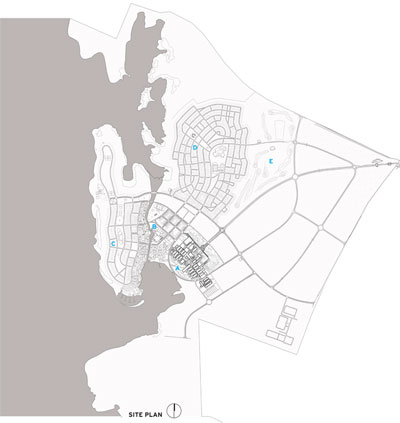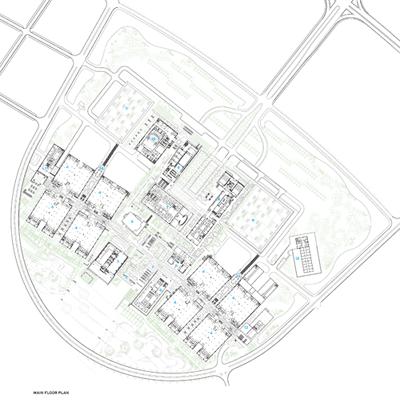KAUST
The marine site's saline environment is highly corrosive to steel, and limited its use to only select elements that could be encapsulated. The buildings' primary structure is cast-in-place concrete, the construction of which draws from a labor pool that is abundant in the area. During construction, the site was home to three concrete-batch plants and one precast plant that allowed work to proceed throughout the day and night and eliminated the need to bring material in from afar (the closest town capable of providing it is an hour away).
| Site Plan | AÂ Â University Campus |
 |
Â
"In the middle of our first meeting with Oger once they came on board, members of their team got on the phone to tie up all the cranes they could get," recalls HOK's Bill O'Dell. "They knew it would have been impossible if they waited because of all the construction in the region at the time." Midway through construction of KAUST, Oger introduced precast concrete to save time. Though cement replacement for high-performance concrete is preferred when building environmentally sensitive structures, according to HOK, more sustainable substitutes like fly ash and silica fume were not readily available in the kingdom.
| Main Floor Plan | 1Â Â Main Quad |
|
 |
||
Â
Since aluminum fares better than steel in this environment and does not require as skilled a labor force, it was used extensively in the shading roofs and special space-frame structures. Concrete trusses in the Applied Mathematics Building are used to achieve a 55-foot cantilever, shading pedestrian areas below it. Several other buildings use sheer walls for smaller cantilevers, averaging around 30 feet. All steel rebar was treated with a special epoxy coating.









